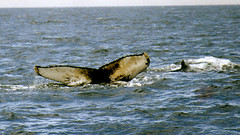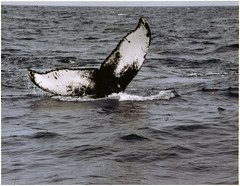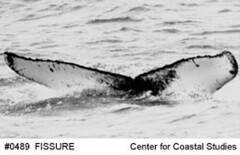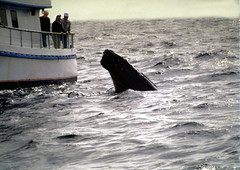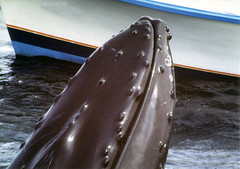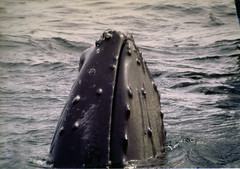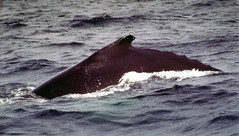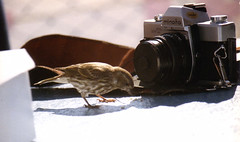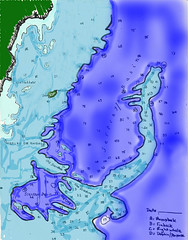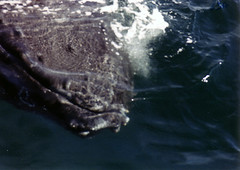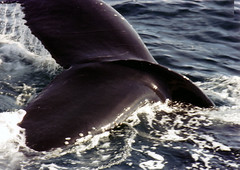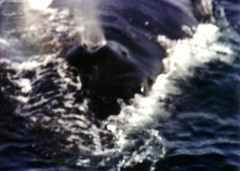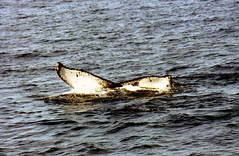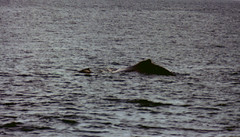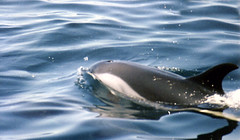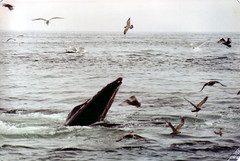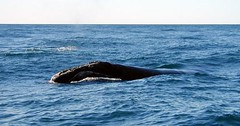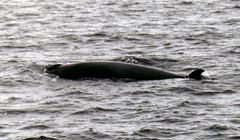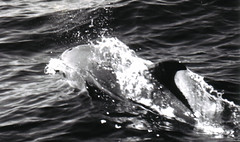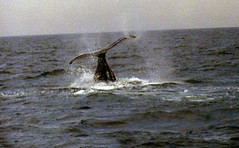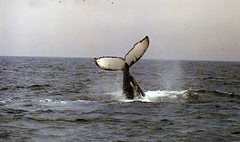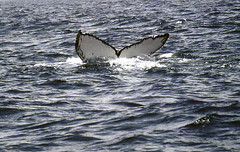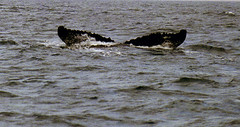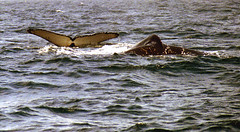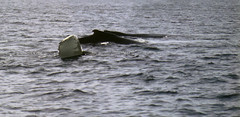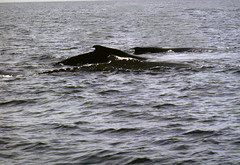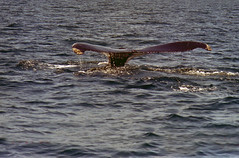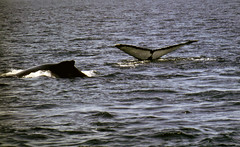This was just about my last photograph of Fissure. But a wonderful woman who went on every whale watch boat she could when she wasn't working, wrote that he was seen several times after this sighting. This is what she described:
"Barney (our nickname for Fissure) has been hanging around off Cape Ann for the last 3 weeks, making lots of new fans for himself. He paid Mason (naturalist out of Glouchester?) a visit when they were out on an 18'outboard on Oct.20. Seems he wrapped himself around their boat, stood on his head the works! What a ham. Now perhaps they'll believe the stories I have been telling them about that whale.
I saw him Saturday, Oct. 24 but he was very interested in his new sibling and did not come over to the boat (Fissure's mother, Veil had been seen with her new calf that year).
Saw him again on Nov. 1 and he was for a time with another whale named Wrap, but left to pay us a visit. Did his routine for us! Very cold that day but it sure was worth it."
Most of the whales were down in the southern end of the Gulf of Maine by then. Many were gobbling up their last meal before they headed south to the Caribbean and the calving and mating grounds. It is not certain that a teenager like Fissure would actually go south since he wasn't ready to mate.
As far as I know, he has not been seen since but one can always hope... it is a big ocean. If there are any whale folks reading this and you have seen Fissure since please say so. He has a very special place in my heart.
